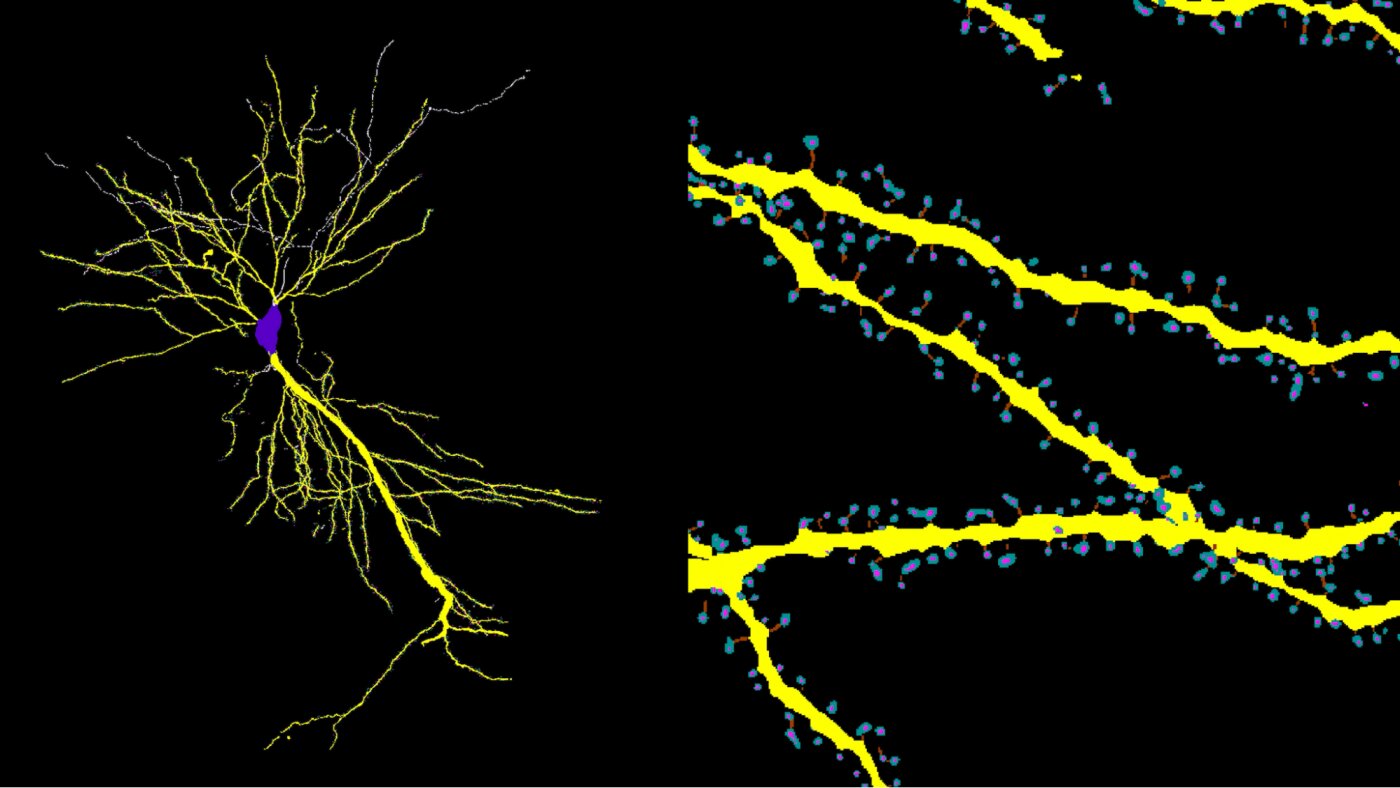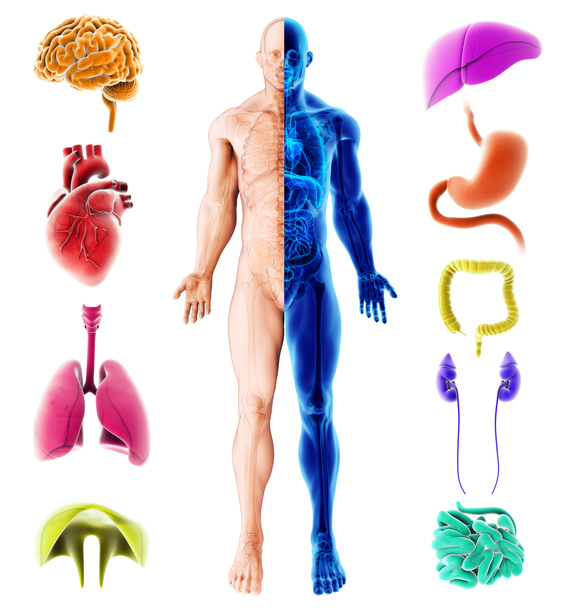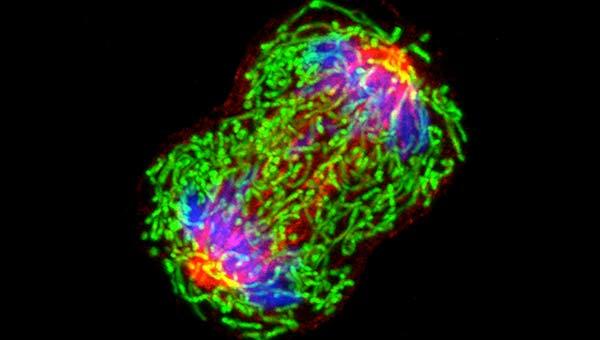The human brain is often described as the most complex object in the known universe. Hundreds of billions of neurons communicate across trillions of synapses, forming the electrical and chemical fabric of thought, memory, identity and disease. Yet, when scientists zoom in on this dense living forest of cells, the first structures that reveal where one neuron talks to another are not the cell bodies or the long axons—but tiny protruding “spines” along tree-like dendrites. These microscopic knobs are the front doors of neural communication. In many neurological disorders, those doors warp, weaken or disappear long before the disease shows itself in behavior. Understanding them is not a curiosity — it is a diagnostic window into the earliest stages of brain change.
For decades, neuroscientists have known that dendritic spines change shape as we learn, stabilize with memory, and collapse in neurodegenerative conditions like Alzheimer’s and Parkinson’s. But studying them at scale has been agonizingly slow. A single neuron can carry thousands of spines. A dataset might contain hundreds of neurons. And until now, the only reliable way to measure them was a researcher hunched over a screen, clicking them by hand for weeks or months. The bottleneck was not technology — microscopes could already image the brain with staggering detail — the bottleneck was human time.
Now a team of scientists at Columbia University’s Zuckerman Institute and collaborators have broken that bottleneck with a deep-learning tool called RESPAN: restoration-enhanced spine and neuron analysis. The software uses artificial intelligence to automatically detect, measure, and map every dendritic spine in complex neuronal images, accomplishing in minutes what previously consumed entire graduate careers.
Turning a Manual Grind into an Automated Map of Thought
RESPAN is not simply a “counting robot.” It reconstructs the three-dimensional geometry of spines, assesses their length and surface area, places them accurately along dendrites, and even calculates how far they sit from the neuron’s central body. In biological terms, this is transformative: the spatial location of a synapse can shape how a neuron integrates information and how that region might fail in disease. For the first time, the entire dendritic architecture can be measured in living animals without the human eye as the limiting factor.
Crucially, RESPAN was trained not to merely replicate human behavior but to outperform it. In benchmarking tests, the AI produced fewer false positives and false negatives than expert manual annotation. What used to be the gold standard — a lab member’s months of meticulous tracing — is now the noisier method. The machine caught details people missed and enforced the kind of consistency no sleep-deprived researcher can.
A Tool Built to Be Used — Not to Sit on a Shelf
One of the most common tragedies in computational neuroscience is that brilliant tools end up locked in the hands of the few who wrote them. RESPAN’s authors designed away that failure mode. No coding is required. A tutorial exists. It runs on an ordinary PC equipped with an NVIDIA GPU. It is open-source, meaning the global community can extend, critique, re-train or hybridize it without permission or license.
This is not a private scalpel — it is a public instrument. By releasing it freely, the developers are not just pushing neuroscience forward but attacking a deeper structural problem in the life sciences: irreproducibility. When different labs score the same biological reality differently, the field fractures. Automated, consistent, high-fidelity measurements cure that fracture. RESPAN makes the measurement side of spine biology no longer a matter of taste, patience or luck — but a matter of code.
Why Spines Matter for Alzheimer’s, Parkinson’s and Beyond
When memory fails in Alzheimer’s, or movement decays in Parkinson’s, something molecular happens years before symptoms. One of the earliest casualties is often the dendritic spine. Synaptic weakening, shrinkage, or loss can precede cognitive or motor decline by a long margin. If we can map spines across time in disease models, we can learn which neural territories fall first, whether certain sub-populations are spared or doomed, and whether treatment restores not just function but structure.
Before tools like RESPAN, those questions were mathematically unaskable at scale. Now they are points on a near-term experimental menu. The ability to spatially register every synapse of a neuron allows scientists to compare not just cell types, but micro-regions within a single cell: are distal spines more fragile than proximal ones? Do stress hormones erode excitatory inputs on only certain branches? Does early Alzheimer’s prune specific sub-trees before others? With a full dendritic map, these are no longer poetic questions — they are measurable ones.
AI as a Microscope, Not a Replacement for Scientists
It is easy to misunderstand AI in science as a competitor to the human expert — as if software replaces the biologist. That is not what RESPAN does. It does not hypothesize or interpret. It does something more foundational — it clears the mud from the glass. By eliminating grunt labor and reducing subjectivity, it delivers scientists a cleaner raw picture. Interpretation, creativity, and theory-building still belong to the people reading the output.
Scientific breakthroughs rarely come from single inventions. They come from cascading consequences: a better image produces a better measurement; a better measurement enables a better hypothesis; a better hypothesis leads to a better experiment. RESPAN sits at the earliest link in that chain, amplifying everything downstream.
A Turning Point in How We Look at the Cellular Basis of Mind
Biology’s most persistent truth is that form and function are inseparable. We cannot understand what the brain does if we do not understand what it is. For generations, dendritic spines have been central to that “is,” but they were too numerous, too small, too dynamic, and too labor-intensive to track comprehensively. RESPAN changes that constraint landscape. It converts what was once a data desert into a data ocean.
Because the tool is open and expandable, its impact will not be confined to the labs that built it. It will propagate into Alzheimer’s research, developmental neuroscience, drug screening, synaptic plasticity studies, and computational modeling. It may accelerate biomarker discovery or clarify why some neural circuits resist degeneration. Even if it never answers those questions directly, it paves the ground for the labs that will.
The future of neuroscience will not be slower, smaller or more manual. It will be algorithmically accelerated, spatially richer, and structurally explicit. RESPAN is an early specimen of that future — a reminder that artificial intelligence is not merely about machines that think, but about machines that help us see the systems that make thinking possible at all.
More information: Sergio Bernal-Garcia et al, A deep learning pipeline for accurate and automated restoration, segmentation, and quantification of dendritic spines, Cell Reports Methods (2025). DOI: 10.1016/j.crmeth.2025.101179






